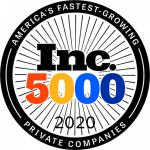Gone are the days when launching an online store seemed like an insurmountable challenge due to limited knowledge and platforms. Today, it’s a different picture altogether. The e-commerce market has witnessed explosive growth, with the pandemic serving as a catalyst that transformed e-commerce into a strategic imperative for every business.
In its early days, the primary focus was setting up a store quickly, mainly through one-size-fits-all solutions provided by single vendors. The aim was to facilitate basic online transactions and get businesses up and running digitally. However, with the ever-changing demands of customers, merchants now face the challenge of staying competitive and delivering increasingly sophisticated and personalized customer experiences. From industry giants to latecomers, every player is investing heavily in embracing e-commerce as a vital revenue-generating channel.
While the concept of omnichannel hogged the limelight a few years ago, a new trend of Composable Commerce has taken over the e-commerce market. In this blog, we will delve into Composable Commerce, exploring its innovative approach and how it reshapes the e-commerce landscape.
The blog will also explore the differences between Composable Commerce and traditional commerce models. By understanding these distinctions, merchants can make more informed decisions about which approach will best cater to their needs and requirements.

Here’s What You Will Learn in This Blog
- What is Composable Commerce?
- How is Traditional Commerce Different From Composable Commerce?
- What are the Features of Composable Commerce?
- Learn How Composable Commerce Works
- Why Does a Composable Commerce Solution Matter?
- Composable Commerce vs Headless Commerce
- How Adobe Commerce Makes Composable Commerce Easier?
- What Should you Determine Before Opting for Composable Commerce?
What is Composable Commerce?
Consider the example of building a cake shop where you can use an out-of-the-box shop design from a developer, which simplifies and speeds up the process but might result in a one-size-fits-all solution sans any personalization. On the contrary, you can construct a custom dream cake shop, starting from scratch, which may be more intricate but guarantees a design tailored to your exact needs and aspirations.
Just as a custom-built cake shop can cater to your preferences, Composable Commerce allows organizations to select and assemble capabilities that precisely fulfill their unique business requirements rather than forcing standard out-of-the-box e-commerce functionality.
The evolving demands of today’s e-commerce landscape have outpaced the capabilities of traditional legacy tech stacks that rely on a single code base for testing and deployment, struggling to keep pace with the rapid innovations in marketing and merchandising. The inflexibility of such architectures can impede businesses from customizing capabilities to suit their specific needs. Fortunately, Composable Commerce offers a transformative solution by harnessing modern technologies and approaches like microservices, APIs, cloud-native solutions, and headless architecture.
With Composable Commerce, organizations gain the agility and adaptability needed to keep pace with the dynamic market dynamics. Embracing this innovative approach allows businesses to adjust to changing demands swiftly, ensuring their solutions remain flexible and future-proof. Seamlessly integrating various services and components empowers businesses to curate a tailor-made solution that evolves alongside their requirements.
How is Traditional Commerce Different from Composable Commerce?
Traditional commerce is building an e-commerce platform as a single integrated system, often called a “monolithic” system. The front and back end are cohesive and integrated, forming a unified platform. It uses a single code base, meaning all changes and deployments are applied to the entire application without the ability to isolate them to specific parts. Additionally, the whole application is hosted on the same servers and infrastructure, and scaling applies to the complete application. On the other hand, Composable Commerce marks a significant shift from the conventional model. It adopts a headless approach, separating the front-end presentation layer from the back-end commerce functionality. The back end is divided into distinct packaged business capabilities or services, allowing them to be flexibly “composed” together. The front end-utilizes APIs (Application Programming Interfaces) to access these back-end capabilities.
In the first wave of digital commerce, businesses offered basic, standardized experiences online. They provided building blocks for customizing commerce experiences. However, with the evolution of digital touchpoints and higher customer expectations, the focus has shifted from merely setting up a store to standing out. Businesses need to cater to ever-increasing demands for engaging digital experiences to engage and convert customers effectively. Today’s e-commerce demands are too complex for Legacy tech stacks with a single code base for testing and deployment that can no longer keep up with the rapid pace of innovation in marketing and merchandising. A Composable Commerce solution is essential to meet these challenges and serve customers effectively.

What are the Features of Composable Commerce?
Composable Commerce empowers e-commerce businesses with tailored solutions to meet unique business needs. Instead of settling for one-size-fits-all e-commerce functionality, Composable Commerce harnesses the power of modern technologies like MACH (Microservices, API, Cloud, Headless) and JAMstack (JavaScript, APIs, and Markup) to adapt seamlessly to the ever-changing market dynamics of today and beyond.
As explained above, it is like building your dream home. Similarly, you can structure your e-commerce business.
Know how Composable Commerce Works:
Modular Architecture: Each component is a self-contained system that can be deployed independently. It supports agile delivery and faster time to market; the modular approach enhances experiences across all touchpoints, ensuring flexibility and adaptability.
Open Ecosystem: Brands can assemble best-of-breed solutions using various accelerators, third-party applications, pre-composed solutions, and best practices, precisely meeting their business requirements.
Headless Approach: The front-end and back-end components of the application are decoupled and operate independently. They interact with each other through APIs, enabling seamless communication between the two modules and services. The separation of the front end enables increased flexibility in leveraging diverse backend technologies and applications to enhance the front-end user experience.
Business Centricity: Composable Commerce empowers business users to change digital strategy, adopt new business models, and create unique experiences without heavy dependence on IT. It allows complete control to combine independent services into a comprehensive solution, catering to complex and dynamic requirements. This approach enables iteration, reduces the cost, and minimizes the risk associated with innovation.
Gartner defines Composable Commerce as a strategy that employs packaged business capabilities (PBCs) to create future-proof digital commerce experiences.
Why does Composable Commerce Matter?
Embracing a Composable Commerce solution is essential to shaping the future of commerce experiences, allowing application leads to adapt swiftly to evolving market demands.

Flexibility to Adapt
In the fast-paced market, operational efficiency is crucial for business success, but using legacy systems can lead to significant slowdowns. Unlike composable systems, where components function independently, monolith architecture tightly binds its components together. This makes making changes or additions challenging, requiring rearranging the entire code to accommodate any modifications. This prolongs development time and necessitates lengthy testing, leading to potential single points of failure. Composable Commerce stands in contrast to the monolithic approach by offering the flexibility to combine various capabilities to achieve specific business objectives. It allows independent components to be interchanged as required, selectively applied to new experiences, or used across multiple experiences.

Lowers Ownership Cost
With all-in-one e-commerce platforms, the perceived benefit lies in including numerous services and features in the pricing. However, in a composable model, retailers only pay for the specific features they utilize, significantly saving technology costs. This adaptability extends to the technology budget, as businesses no longer need to pay a lump sum for bundled services. Instead, they can allocate resources based on their specific business needs. For instance, if enhancing cross-site inventory visibility is a priority, a larger budget can be allocated to invest in a robust inventory management platform.

Scope to Innovate
Composable tech stacks foster an environment ripe for innovation due to their ease of implementing changes. The freedom to mix and match components empowers retailers to experiment with new features and test different business models with minimal disruption to services. This flexibility allows teams to fine-tune experiences, optimizing aspects such as device types or customer navigation on the site.

Enhance CX
One of the critical benefits of Composable Commerce is the flexibility it offers businesses, enabling them to exceed consumer expectations and outperform competitors. Organizations can deliver highly personalized and differentiated commerce experiences across various touchpoints. Composable Commerce fosters a dynamic commerce ecosystem, facilitating connections with partners, vendors, and other solutions, streamlining the process of building and adjusting offerings as needed.
Moreover, Composable Commerce streamlines operational efficiencies by facilitating faster development cycles and reducing team interdependence. Businesses can maintain design and process freedom while independently scaling systems to respond to changes effectively.
Composable Commerce vs Headless Commerce
Even Composable Commerce and headless commerce are related but distinct concepts. Headless commerce is the initial stage, where a platform’s front and back end operate independently through APIs, allowing changes on one end without affecting the other. Composable Commerce builds upon this modularity and decouples various services that address specific business challenges, such as search, payments, or personalization. In essence, headless commerce serves as a stepping stone toward achieving a fully composable enterprise. Merchants are increasingly implementing headless and composable architectural approaches.
There are also challenges to implementing Composable Commerce owing to its potential expenses and time-consuming nature. Moreover, Composable Commerce often may lead to higher maintenance and ongoing support costs. Merchants may find it necessary to employ dedicated development teams or seek external expertise to manage continuous updates, enhancements, and maintenance. In contrast, traditional commerce using a unified platform demands significantly less time, effort, and resources for the commerce stack’s setup and ongoing management. However, it is important also to consider the cost of not changing. Composable Commerce provides a solution combining both worlds’ benefits, allowing businesses to implement changes incrementally.
Considering these challenges, Adobe Commerce has developed several capabilities to make Composable Commerce easier and simpler to adopt.
How Adobe Commerce Makes Composable Commerce Easier
Adobe Commerce has developed capabilities to make Composable Commerce easier and simpler. The solution caters to merchants aiming to go with the headless and Composable Commerce path.
Adobe Commerce supports both headless and non-headless front-end experiences within the same ecosystem. Merchants can choose the most appropriate architectural approach for each front-end use case. Moreover, this approach enables merchants to gradually transition to a headless and composable architecture without simultaneously migrating their entire system. Additionally, this allows merchants to realize value more rapidly when embracing Composable Commerce technology.
Enhanced Functionalities
It offers a wide range of features, providing extensive out-of-the-box functionality. This minimizes the need for multiple vendors in the delivery process and streamlines the entire commerce stack. It helps merchants to overcome time-to-market challenges commonly encountered in Composable Commerce implementations. Merchants can launch their businesses much faster while retaining the flexibility to integrate additional third-party services or capabilities as their commerce stack evolves.
Headless and Non-headless Front-end Experiences
Adobe Commerce offers a flexible approach to delivering customer experiences by supporting headless and non-headless front-end experiences within the same ecosystem. This allows merchants to choose the most suitable architectural method for each front-end use case and gradually transition to a headless and composable architecture without simultaneously migrating their entire system.
API Mesh Feature
API Mesh is a powerful tool that simplifies the integration of various micro-services, third-party tools, and applications into a unified API endpoint for front-end developers to use. Additionally, API Mesh allows developers to customize and extend APIs directly in the gateway, making building and maintaining new features and experiences in a headless and composable model easier.
Adobe App Builder
Adobe App Builder is a serverless extensibility platform that empowers merchants to create their microservices, design custom experiences, and extend Adobe solutions. By providing a serverless, micro-service container, App Builder streamlines the process for merchants to build custom microservices and integrate them with Commerce and other Adobe solutions and third parties. This removes the burden of managing infrastructure and ensures consistent language and framework for microservices, reducing stack complexity, simplifying stack management, and lowering the total cost of ownership.
Adobe Commerce streamlines the path to Composable Commerce for merchants by leveraging the advantages of headless architecture, API Mesh, and App Builder, all without requiring extensive DevOps knowledge. The result is an e-commerce experience that gains exceptional flexibility and efficiency. However, combining composable and traditional commerce hinges on various factors and trade-offs.

What Should you Determine Before Opting for Composable Commerce?
Composable Commerce is seen as the future of e-commerce, offering numerous advantages to merchants, such as scalability, enhanced resourcing flexibility, and better support for multi-experiences. It presents challenges, as managing multiple components, vendors, and integrations requires deeper in-house technical expertise and careful vendor selection.The decision should be based on factors such as the organization’s technical maturity, project complexity, scalability needs, team expertise, and agility requirements. It is vital to thoroughly assess the benefits and trade-offs and consider the long-term implications before choosing.
Staying ahead of the competition and meeting customer demands are critical for sustained success. If your business operates in a fast-paced, competitive market that necessitates swift, customer-centric experiences, you may encounter challenges if your applications are complex and time-consuming to modify. The need to adapt and integrate open-source solutions seamlessly to cater to your growing business’s changing requirements further complicates the situation. If your answers are yes to these above questions, then it may be time to consider the implementation of Composable Commerce either in stages or as a comprehensive transformation. To address these challenges, you may need to consider the implementation of Composable Commerce either in stages or as a comprehensive transformation.
We have established strong collaborations with leading commerce platforms such as Adobe, SAP, Salesforce, and more. Our extensive expertise and in-depth knowledge of these platforms allow us to offer help in selecting the perfect Customer Experience (CX) platform tailored to your business needs.
Let us be Your Strategic Partner in Choosing the Right CX Platform that will Accelerate Your Growth and Drive Lasting Success
About the Author

Rashmi Shrivastava is a data-driven, results-oriented, and tech-savvy B2B Marketing & Business Strategy Leader with a proven track record of over a decade of building brands, accelerating growth, and leading digital transformation. Inherently passionate about crafting, executing, and managing overall growth strategies, she successfully leads cross-functional Marketing and Demand Generation teams.
Rashmi has managed digital transformation projects across domains with a constant focus on building a transformational CX strategy. She has supported brands to adopt a value-driven and customer-centric culture.





